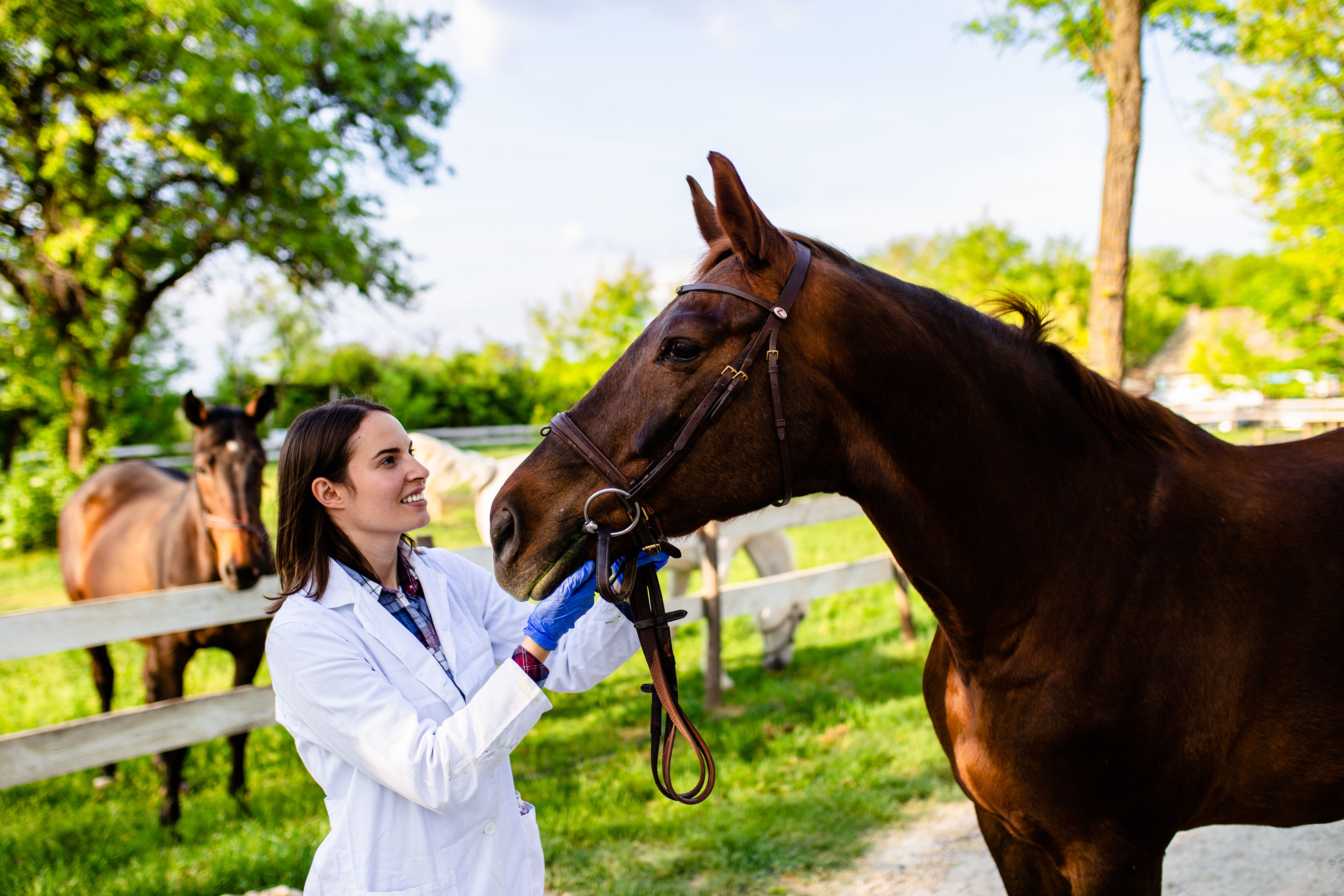AAEP announces initiatives to recruit and retain equine veterinary professionals
The Commission of Equine Veterinary Sustainability aims to address areas in need of improvement
hedgehog94/stock.adobe.com

Data collected by the American Association of Equine Practitioners (AAEP) found that 1.3% of veterinary graduates enter equine practice and 4.5% pursue further training in equine internship positions yearly. However, within 5 years 50% of those veterinarians leave equine medicine for small animal practice or quit the profession completely.1 To help improve the industry and alleviate the shortage of equine veterinarians, the AAEP created a strategic plan to address its sustainability, including the launch of its Commission of Equine Veterinary Sustainability.
Emergency visits
AAEP interviewed practice owners, veterinary students, and recent graduates to help identify issues within the profession and what these professionals want that improve satisfaction. One pain point identified was receiving additional money for performing emergency visits. Data collected for the American Association of Equine Practitioner’s 2022 Equine Salary and Lifestyle Survey, 42% of the veterinarians surveyed said they make no additional money from emergency visits.2
Jennifer Reda, DVM, associate veterinarian at Southern Equine Service and member of the Compensation Subcommittee of the AAEP Commission on Equine Sustainability, shared that she and her colleagues used to receive a portion of the emergency fee they charged for visits, but not the entire amount. To help, the veterinarians worked with the AAEP to restructure their compensation model on emergency fees to make sure the fee goes directly to the responding veterinarians. After presenting their case to the ownership at their practice, the owner agreed to the model they created.
“Knowing that the doctor who sees each emergency will receive that whole ER fee—and ours are very reasonable—helps encourage us to get out there and see the emergencies and receive our fair compensation for the disruption it brings to our lives, evenings, nights, weekends, and families,” said Reda.3
Student engagement
Along with the Compensation Subcommittee, a Student Subcommittee was formed to prioritize outreach to students. The subcommittee surveyed veterinary students to determine their needs and created a speakers’ bureau of practitioners to visit schools to share positive experiences. In 2023, the group visited 25 schools and plans to visit the rest in 2024.
The committee also has an Internship Subcommittee that created documents to provide students with more help when choosing an internship program. Materials were also created for the mentors to assess the progress of their interns and attract new veterinarians.
“Mentoring requires a time commitment, and while it offers rewards for that investment, it can prove to be difficult to add to a busy practice that may already be short-staffed,” said Amy Grice, VMD, MBA, former AAEP treasurer and member of the AVMA Veterinary Economics Strategy Committee.3 “Employers must ensure that the practice has the capacity to mentor a new graduate sufficiently such that patient care will not be compromised, and the associate will be satisfied enough to remain in equine practice.”
The subcommittee also held webinars in 2023 and created resource documents including AAEP’s Best Practices Guidelines, a document that provides red or green flags for internships, an internship core competencies document, and a competency feedback form among other guidelines.
Bringing resources into practices
A compensation survey conducted by AAEP found that on average, those working in practices work 5.3 days a week during the busiest quarter of the year and 4.4 days during the less busy quarter, leading to the creation of a Compensation Committee.2
Reda and 3 other associates at their practice asked the owners for the 6 months of a 4-day work week from July to December 2023, which they approved. According to Reda, she felt more productive during a 4-day week and stopped working longer days than usual on the 4 days. To put it into perspective, Reda produced $130,000 more in the fourth quarter of 2023 than she did in the fourth quarter of 2022.
For Reda, she credits the day off to allow her to stack appointments and items to be done during business hours in one day, making her more efficient and productive on the days she was working. After experiencing this, Reda had this advice for equine veterinary professionals.
“Other practitioners in our (AAEP) Compensation Committee confirmed this trend in their practice. Many doctors working four days actually were producing more than when they were working five days, and even the practice as a whole was doing better. My advice to other associates is: Do not be afraid to ask for the change that you need. Just because it hasn’t been done before in your practice, does not mean that it cannot be done,” Reda concluded.3
Along with the committee and subcommittees here, AAEP has more initiatives to help improve the equine industry, and can be found on the AAEP website.1
References
- AAEP Equine Veterinary Sustainability Initiative. American Association of Equine Practitioners. Accessed March 28, 2024. https://aaep.org/about-aaep/aaep-equine-veterinary-sustainability-initiative
- 2022 Equine Medicine Salary & Lifestyle Survey . Published online October 2022. Accessed March 28, 2024. https://aaep.org/sites/default/files/2023-06/AAEP_2022_Salary_Survey_Report.pdf
- Lederhouse C. AAEP develops resources to recruit, retain equine veterinarians. American Veterinary Medical Association. Published March 27, 2024. Accessed March 28, 2024. https://www.avma.org/news/aaep-develops-resources-recruit-retain-equine-veterinarians?utm_source=delivra&utm_medium=email&utm_campaign=todays-headlines-news